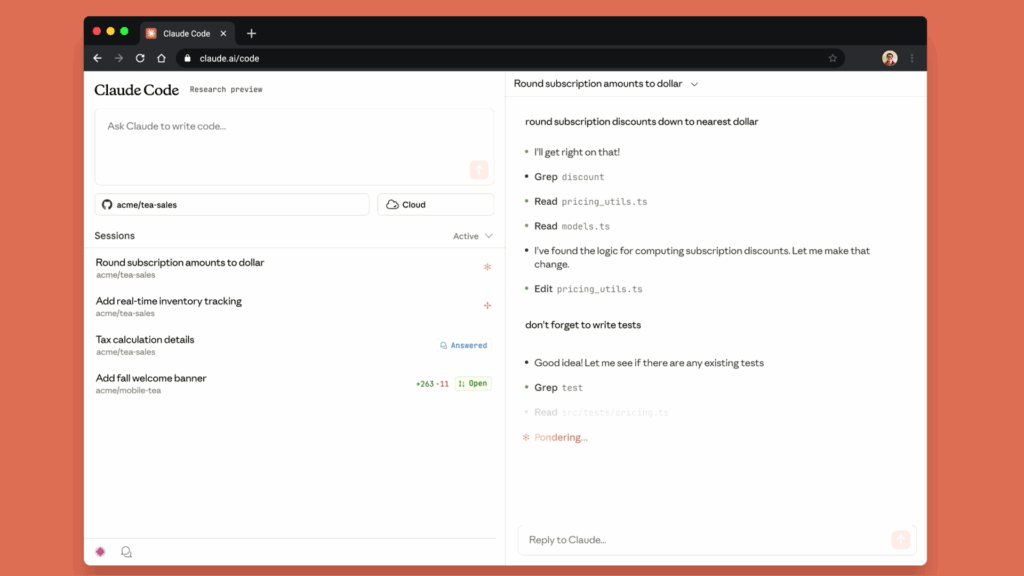- Anthropic has made Claude Code easier for anyone to use, regardless of technical training
- Users can access Claude Code on a web browser or phone and assign multiple coding tasks and manage them in real time
- The tool’s new accessibility opens up advanced coding capabilities for non-developers and solo creators
Anthropic makes its Claude Code programming tool available and usable by virtually anyone with a web browser or smartphone.
No longer limited to terminals and local environments, you can now delegate more coding tasks to Claude Code directly from your claude.ai browser tab.
Being usable on mobile devices adds to this sense of flexibility. You can use Anthropic’s iOS app to get to Claude Code and get a new piece of software sketched out in a very short time, though not without its share of bugs and flawed mechanics.
That’s a remarkable shift for a tool like Claude Code, which Anthropic boasts that it used to write 90% of its own code in-house. The company claims that it has contributed to a 67% jump in production per engineer, even though the engineering team doubled in size.
This is partly because Claude Code is so proactive when receiving instructions. Users can submit new requests while previously running and tweak them before they finish if it looks like Claude hasn’t fully understood what it’s been asked to do.
In a sense, this is the latest chapter in AI’s ongoing effort to dissolve barriers between expert tools and casual users.
In another, Claude Code on the web allows users to have the programming software mimic how humans work in the disjointed fits and starts that jump around to different contexts. You just assign the work, Claude handles the execution, and you review the results on your schedule.
Claude Code’s expansion is something of a culmination of recent efforts by Anthropic to push out a new line of AI models. Claude Sonnet 4.5 and Claude Haiku 4.5 debuted recently, with agent-based coding a key element of how Anthropic is pitching them. The emergence of Claude Code online continues Anthropic’s efforts to reshape who benefits from this kind of AI model.
Code for everyone
That shift in role can feel jarring to some developers who pride themselves on hands-on control.
But it’s arguably just another level of automation of some aspect of programming, going back to physically moving relays in building-sized computers, down to the much faster development of high-level languages, then frameworks, then low-code platforms, and, for the average person, the development of the content management systems in use today.
Agentic AI just pushes the boundary further by autonomously carrying out more abstract instructions. It certainly doesn’t remove the need for human programmers and designers to make good programs, although making it easier to produce bad ones is a built-in argument against their use.
In that light, Claude Code becomes less about replacing developers and more about augmenting them. It handles the glue code, the boilerplate, and the regression tests. The boring bits, in other words.
Anthropic says it’s also a real money maker, with Claude Code on track to generate more than half a billion dollars in annual revenue, with ten times the usage since it goes generally available in May 2025.
Word of it has to spread to people like solo developers and independent teams who once struggled to keep up with code maintenance. Designers who occasionally dabble in frontend tweaks can finally ship a side project they’ve been playing with for years.
There are still plenty of limitations. Not all problems can be solved with an agent. Not all users want to write specifications in natural language. But for a growing range of tasks, Claude Code’s accessibility can make all their programming dreams come true.
Follow TechRadar on Google News and add us as a preferred source to get our expert news, reviews and opinions in your feeds. Be sure to click the Follow button!
And of course you can too follow TechRadar on TikTok for news, reviews, video unboxings, and get regular updates from us on WhatsApp also.



